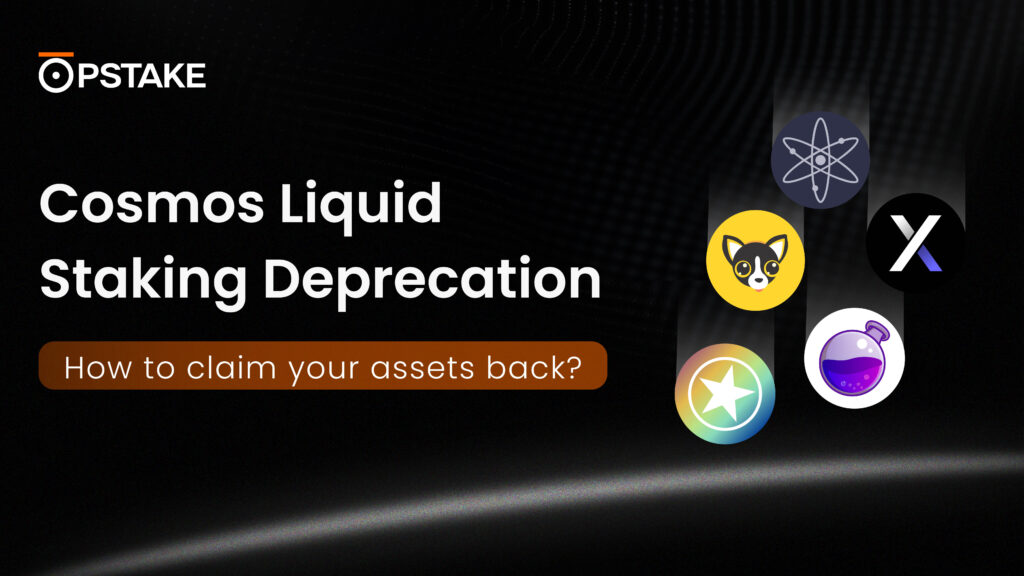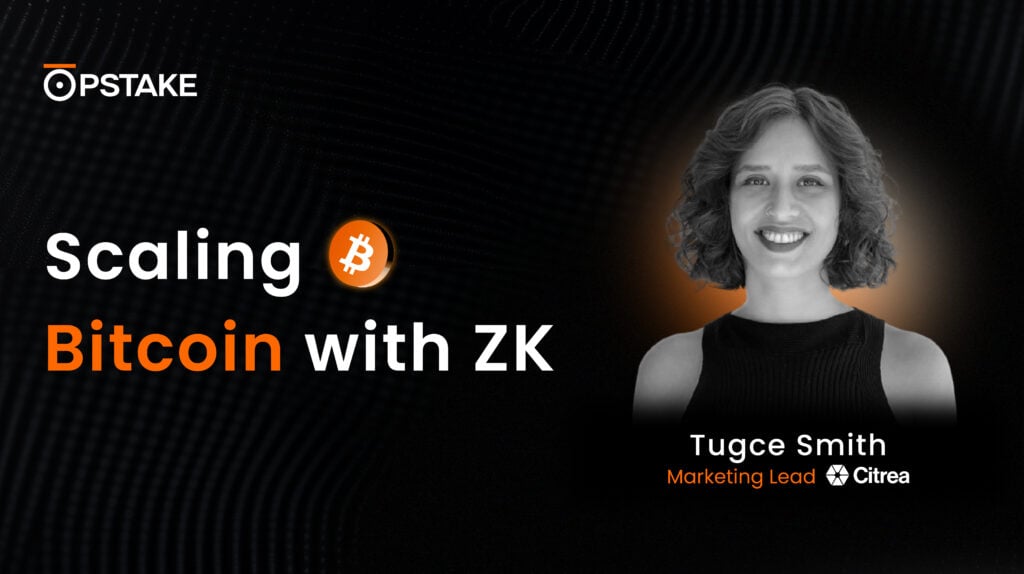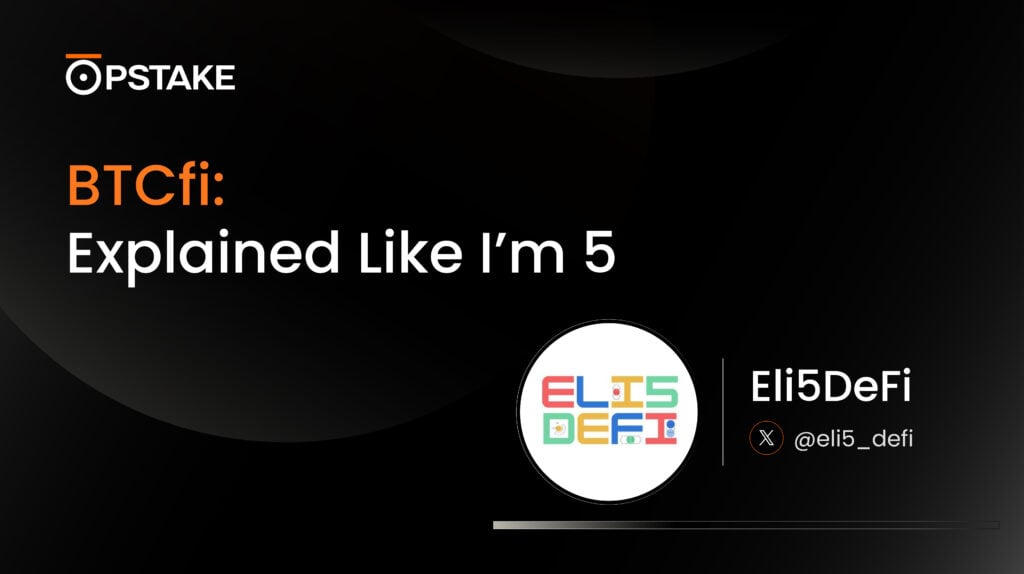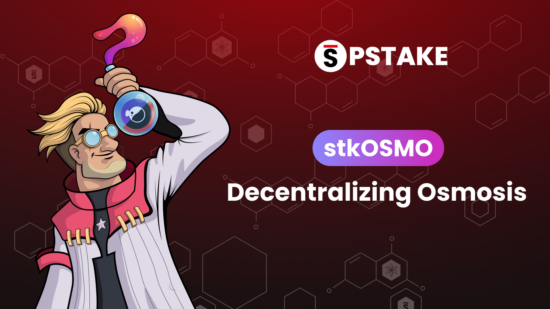Tl;dr
- pSTAKE is expanding its liquid staking support in Cosmos to Osmosis with the launch of stkOSMO, the first stkToken in Cosmos after stkATOM.
- stkOSMO differentiates itself from the current OSMO liquid staking landscape by
- Decentralizing Osmosis with a new pSTAKE Chain Decentralization Strategy that will delegate stake across 75 validators based on an automated weighted mechanism considering parameters like Voting Power, Commission, Uptime, Governance Participation, and Slashing history
- Aligning the Osmosis Community with OSMO liquid staking
- Bringing innovative features like Instant Redemptions to OSMO liquid staking
- stkOSMO launches on 6 December 2023, pending PSTAKE governance approval
The Case for OSMO Liquid Staking
The role of OSMO can be described as two-fold:
- Staking token for the security of the Osmosis chain
- Base asset for building other tokens’ liquidity and incentivization.
The majority of trading activity in Cosmos takes place on Osmosis. Building deep liquidity through innovative incentivization and liquidity-locking models has ensured high user retention for active trading on the Osmosis dApp. On the other hand, advances in trading efficiency with the launch of Supercharged Liquidity have led to DEX aggregators like TFM, Squid, and Skip leveraging Osmosis’ liquidity for passive trading.
The Osmosis zone has facilitated $600M+ IBC volume in the last 30 days. On average, Osmosis processes ~230,000+ transactions (related to staking, trading, LPing, DeFi dApps, etc.) in a single day by ~15,000+ daily active accounts. ~$200M of staked OSMO currently secures the Osmosis chain with a ~53% staked ratio. Staked OSMO provides much-needed economic security to the leading DeFi hub of Cosmos. This provides a secure trading and DeFi experience, especially during high activity times like the start of Celestia’s TIA trading.
Historically, the OSMO staking yield has come from OSMO inflation to drive chain security while pursuing early growth and adoption of Osmosis as the primary DEX in Cosmos. Today, OSMO staking extends beyond OSMO inflation. The introduction of Osmosis taker fees (fees paid by a trader when their order is executed on Osmosis which is shared with stakers) and OSMO 2.0 (net positive staking yield) is driving real yield for OSMO staking. Simultaneously, Osmosis community initiatives such as thirdening (inflation reduction) have boosted OSMO’s usage in DeFi.
OSMO’s role in Cosmos DeFi has been no short of a pioneer. It has helped bootstrap much-needed liquidity in Cosmos for native tokens like ATOM, AKT, STARS, XPRT, INJ, and more, as well as non-native tokens like WBTC, WETH, and more. Building deep liquidity has also enabled Osmosis’ offering to extend beyond being a DEX. Various DeFi protocols like Mars Protocol (Borrowing/Lending), Quasar and IBCX and CALC Finance (Structured Products), Membrane (Decentralized Stablecoin), and Levana (Perpetuals) have made Osmosis its home.
=> The Osmosis chain must maintain a high OSMO staking ratio for security.
=> Due to its diversified token utility, OSMO is a prime DeFi collateral.
==> OSMO needs to be staked AND remain liquid.
How does stkOSMO fit in the OSMO liquid staking landscape?
Currently, 333M+ OSMO is staked. However, it is interesting that only ~6.6% of the total staked OSMO is liquid staked, showing great potential for OSMO liquid staking growth.
Decentralizing OSMO liquid staking
stkOSMO will be the first LST by pSTAKE that goes live with pSTAKE’s new automated Chain Decentralization Strategy. pSTAKE’s new weighted scoring mechanism uses various decentralization parameters to suggest the final validator set and the amount of stake delegation to each validator in this set.
While there are various delegation models, pSTAKE contributors strongly believe liquid staking providers should not gatekeep validator delegations. Delegation should be driven by transparent on-chain data (source of truth).
OSMO deposits on pSTAKE will initially be staked across 75 validators (50% of the active set), keeping in mind Osmosis decentralization.
For stkOSMO, the pSTAKE delegation model will actively look at the following data over the last 180 days:
- Voting Power – 0.05% to 5%
- Commission – 5% to 10%
- Uptime – 95% to 100%
- Governance Participation – 60% to 100%
- Part of the active set without any slashing instance
The new pSTAKE Chain Decentralization strategy has the potential to bring about the following benefits for OSMO liquid staking:
- Constant liquid staking alignment with the Osmosis validator set
- Have a significant differentiator for stkOSMO
- Increase transparency with on-chain data-driven OSMO distribution
- Create a healthy competition for OSMO liquid staking
- Reduce protocol and users’ slashing risk
Alignment with Osmosis
pSTAKE’s new Chain Decentralization Strategy was developed to improve and maintain constant liquid staking alignment with the host chain (in this case, Osmosis). The delegation model’s active lookout on decentralization parameters will ensure that OSMO stake distribution does not reach validators acting against the Osmosis network’s best interest.
Post-launch, the main priority will be to get stkOSMO deeply rooted within the Osmosis DeFi Ecosystem. Osmosis will remain the primary liquidity and trading hub for stkOSMO to prevent liquidity fragmentation across other DEXs in Cosmos. A stkOSMO/OSMO pool is expected to go live on the Osmosis DEX with PSTAKE incentives at launch.
Innovating OSMO liquid staking
pSTAKE will bring innovative liquid staking features like Instant Redemptions to OSMO liquid staking. The notion of LSTs is incomplete if users do not have instant access to native token liquidity. Primarily, this is done by building deep LST/native token liquidity. To go one step further and give pSTAKE users a superior liquid staking experience, pSTAKE allows instant LST redemptions on its dApp directly.
For example, users can instantly redeem stkOSMO for OSMO (paying a small fee) on pSTAKE. This works thanks to a state-of-the-art mechanism that will match daily OSMO deposits into the protocol with daily stkOSMO withdrawal requests.
Supercharging OSMO liquid staking
In recent months, Osmosis has seen tremendous ecosystem advances with the reduction of OSMO inflation, the introduction of taker fees, OSMO 2.0 resulting in a net positive staking yield, the launch of Supercharged liquidity, and more. Like pSTAKE, shipping on Osmosis will continue to grow as it strengthens its position as one of the leading DeFi hubs in Cosmos.
The case for OSMO liquid staking has never been greater. With huge room for improvement in the decentralization of liquid staking in Cosmos, pSTAKE is all set to expand to exciting ecosystems like Osmosis (DYDX, TIA, and XPRT expected next). OSMO will be the first token to be supported by pSTAKE after ATOM.
stkOSMO brings pSTAKE’s new Chain Decentralization Strategy to help decentralize Osmosis, better align liquid staking with the Osmosis Community, and introduce innovative features like Instant Redemptions.
Wen launch? 6 December 2023.
About pSTAKE
pSTAKE is a multi-chain liquid staking protocol that unlocks liquidity for your staked assets. With pSTAKE, you can securely stake your Proof-of-Stake (PoS) assets to earn staking rewards, and receive staked underlying representative tokens (stkASSETs) which can be used to explore additional yield opportunities across DeFi.
At present, pSTAKE supports Binance Chain (BNB) and Cosmos (ATOM) networks’ native tokens, with a view to support more chains and assets like Osmosis (OSMO), DYDX, Persistence (XPRT), and Celestia (TIA) in the future.










